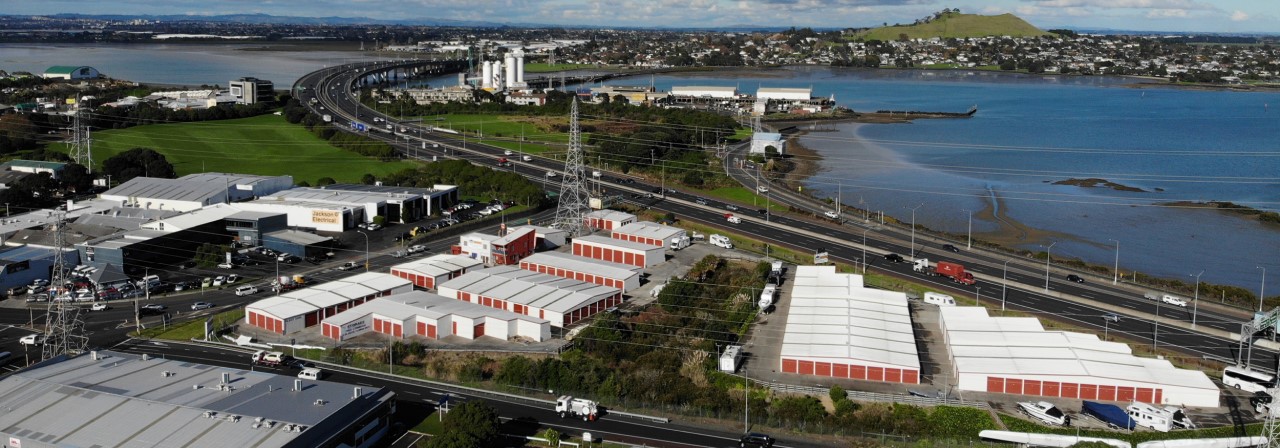How to Approach an Investment in Industrial Property
If you’re looking to invest in real estate, and you’re interested in commercial investment, industrial property presents a strong case.
Industrial real estate can include warehouses, factories, depots, and storage facilities, and is often inexpensive to own and operate. It typically provides stable cash flow with long-term tenancies.
So, how should you approach an investment in industrial property? As with any investment, it’s important to conduct careful research and be fully aware of the risks associated. While there are many benefits to owning industrial property, it can be a major financial burden if not investigated properly beforehand. With that in mind, we’re looking at what steps you should take before investing in industrial real estate.
1. Define your investment criteria
What are your industrial investment ambitions? Do you want to upgrade and sell on the property? Do you want to find a long-term tenant? Do you perhaps occupy the property yourself? There is a range of options, and you must make your investment intentions very clear to agents, vendors, and perhaps most importantly, yourself.
Doing so will facilitate a smooth investment process, as all parties involved will be fully aware of the end goals.
2. Future-proof your investment
Start looking for assets that fit your criteria, and determine which areas are most popular. Future-proofing your investment is all about thinking ahead and imagining how the property will fit into the market later. Look for attributes such as strong transport links, good infrastructure, future redevelopment opportunities, entry and exit strategies, etc.
Properties located close to key transport nodes are critical to tenant supply chains and are thus more desirable to occupiers. The 21st century has brought with it significant e-commerce tailwinds and as such, industrial assets located near residential areas are attractive to service the increasing demand for shorter delivery times. Tenants in dense urban areas are often able to afford higher rents, so your return on investment may be largely contingent on the location of the industrial property.
A review of relevant zoning restrictions is important to understanding the future development potential of a site. A low site coverage ratio provides an opportunity to expand the asset in the future and increase the income that is generated. Ensure that you are up-to-speed on any zoning restrictions, and have a clear understanding of redevelopment opportunities and potential restrictions.
Industrial units with an optimal office to warehouse ratio (circa 10:90) and a simple configuration where units can be easily split or divided are often seen as desirable too, as these spaces can cater to a range of tenants.
The flexibility of space is key when appealing to a wider tenant mix and reducing the risk of the space being vacant for long periods.
3. Seek good opportunities
You’ve got to be in to win, so make sure you’re active in the market! This means keeping your finger on the pulse of all activity. There are many ways to do this. Attend auctions (even if you have no intention of bidding), view listings online, read market research, and speak with agents. These are all obligation-free but will be vital in ensuring you’re aware of any opportunities that may arise.
Looking for more insights? Never miss an update.
The latest news, insights and opportunities from global commercial real estate markets straight to your inbox.
4. Secure your income
If you’ve purchased an industrial property and are now looking to establish a tenancy in your property, make sure you carefully review your potential tenant’s past payment and financial history, to ensure that they can continue to make rental payments, without any danger.
It is crucial to understand the needs of your tenants and their businesses, to ensure the space they occupy not only complements their business needs but is affordable to them. It is strongly advised to hold a security deposit—usually three months’ rent—to mitigate any damage the tenant brings on the property or risk of default.
Industrial tenants sign leases typically ranging from three to ten years. Longer leases provide more certainty of income through the investment horizon. This reduces the risk of future income being eroded through void periods.
When determining the lease terms, it is important to consider what the average rent is in the industrial property’s submarket. If your property is significantly more expensive than the market rate, it will take much longer to secure a tenant leading to significant loss of rental income during a potential vacancy period and you risk not achieving a favourable outcome when you look to sell the property in the future.
Alternatively, if the current rent received from the tenants is significantly below the prevailing market rates, the property is underperforming and will require active management to bring the current rent to market levels. This will involve taking on additional leasing risk, to maximise returns.
Have a clear picture
When investing in industrial property (or any commercial real estate for that matter), information is key. Speaking with your agents and asking them for advice is important, as it’s best to be fully informed on what’s happening in the market. This gives you the tools and insight to make a profitable investment. To find out more, talk to the team here at JLL today—if you’re in the market, we can help you find the ideal industrial property for sale.
Contact Charlie Todd
Industrial Sales and Leasing BrokerWhat’s your investment ambition?
Uncover opportunities and capital sources all over the world and discover how we can help you achieve your investment goals.
